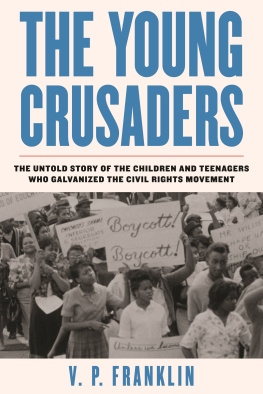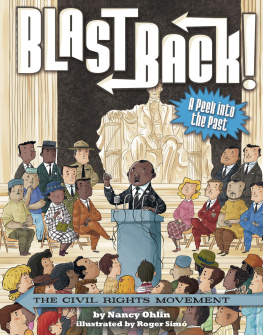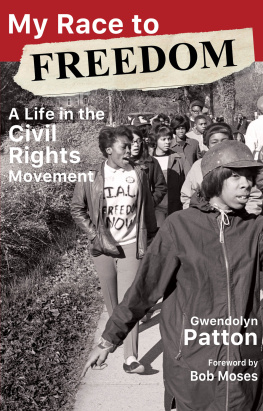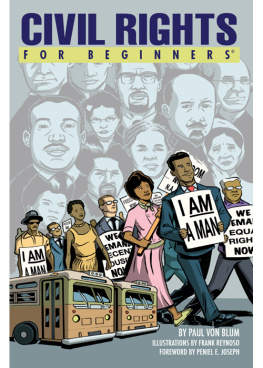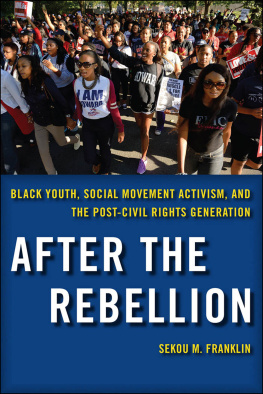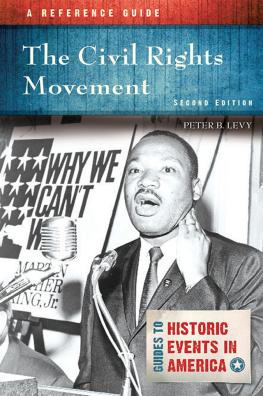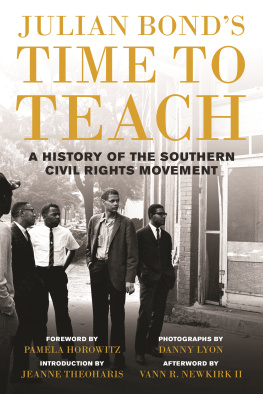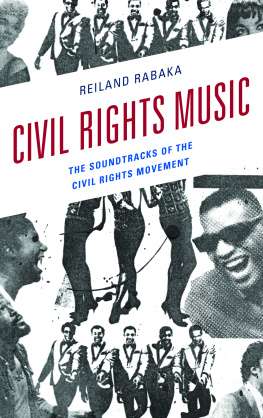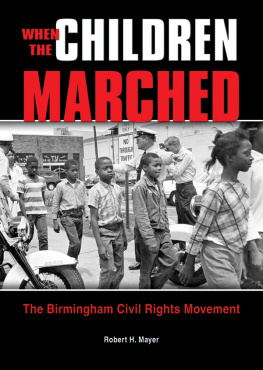Contents
Pagebreaks of the print version
Guide
PRAISE FOR THE YOUNG CRUSADERS
In The Young Crusaders, V.P. Franklin reveals that the entire history of civil rights protest has depended in large measure on activism by children and teenagers. Covering events in nearly fifty cities, the book is stunning in its breadth and proves the undeniable impact and courage of these youthful activists. Their voices and stories resonate powerfully today and should energize and inspire a new generation of young activists in their fight for reparations and equality.
MARY FRANCES BERRY
Geraldine R. Segal Professor of American Social Thought and professor of history and Africana studies, University of Pennsylvania, and author of History Teaches Us to Resist
Filling a void in our understanding of the Civil Rights Movement, V.P. Franklin presents the remarkable and largely untold story of young peoples central role in the movement. The Young Crusaders reveals the unheralded work of children and teens, showcasing the incredible power of youth activism for our time, for all time.
IBRAM X. KENDI
National Book Awardwinning and #1 New York Times best-selling author of How to Be an Antiracist
Few make history jump off the pages like V.P. Franklin, one of the fields most prominent and thoughtful historians. The Young Crusaders will stand as the definitive untold history of young people getting into good trouble for racial justice. Franklin documents the relentless history of young people resisting and launching social justice campaigns for civil rights, educational justice, Black Power, and reparations. Both revelatory as well as a joy to read, it is a profound reflection on the power of young crusaders to change the world.
BETTINA LOVE
author of We Want To Do More Than Survive: Abolitionist Teaching and the Pursuit of Educational Freedom
The Civil Rights Movement overthrew Jim Crow and changed America. While famous leaders like Dr. King are well known, it is not widely known that actions by black children and teenagers were crucial to the movements success. These youth faced death, injury, attack dogs, imprisonment, and rebuke as they courageously fought as movement foot soldiers to destroy a vicious system of racism. Through meticulous research and analysis, V.P. Franklin presents the voices of these children to document how they toppled legalized racial oppression. For the first time, their revelatory and powerful stories are articulated here in The Young Crusaders.
ALDON D. MORRIS
author of The Origins of the Civil Rights Movement: Black Communities Organizing for Change and president of the American Sociological Association
V.P. Franklins The Young Crusaders is a revelation, profoundly broadening our understanding of the Civil Rights Movement and the essential role of Black youth in revolutionary movements of the past and today. It is a must-readbrilliantly conceived and researched, beautifully written, and deeply moving.
BRENDA E. STEVENSON
author of The Contested Murder of Latasha Harlins: Justice, Gender, and the Origins of the LA Riots
OTHER WORKS BY V. P. FRANKLIN
New Perspectives on Black Educational History (COEDITOR)
The Education of Black Philadelphia
Black Self-Determination:
A Cultural History of African-American Resistance
Living Our Stories, Telling Our Truths:
Autobiography and the Making of the
African-American Intellectual Tradition
Martin Luther King, Jr.: A Biography
African Americans and Jews in the Twentieth Century:
Studies in Convergence and Conflict (COEDITOR)
My Soul Is a Witness: A Chronology of the
Civil Rights Era, 19541965 (COAUTHOR)
Sisters in the Struggle: African American Women in the Civil RightsBlack Power Movement (COEDITOR)
Cultural Capital and Black Education: African American Communities and the Funding of Black Schooling, 1860 to the Present (COEDITOR)
Message in the Music: Hip Hop, History, and Pedagogy (COEDITOR)
The Journal of African American History, 20022018 (EDITOR)

To Young Freedom FightersPast, Present, and Future
Introduction
Children and Teenagers
Foot Soldiers for Democracy
The day we were arrested, one of the Negro trusties sneaked us a newspaper. We discovered that over four hundred high school students had also been arrested. We were so glad we sang freedom songs for an hour or so.
Anne Moody (1968)
IT MAY SURPRISE many readers to learn that the largest civil rights demonstration in United States history was not the August 1963 March on Washington, but the system-wide school boycott in New York City on February 3, 1964, when over 360,000 elementary and secondary school students went on strike and thousands attended the freedom schools opened throughout the city. Civil rights activist Bayard Rustin, who had organized the March on Washington, was recruited by local leaders to head up the mobilization for the Freedom Day protests in New York City. The day after the strike Rustin declared, this was the largest civil rights protest in the nations history. It was the participation of hundreds of thousands of African American, Puerto Rican, and white children and teenagers in the public school boycotts in New York, Boston, Chicago, and other cities in the 1960s that made them successful. Indeed, children and teenagers were on the front lines at nonviolent protests and demonstrations throughout the 1950s and 1960s, but their major contributions to civil rights activism has generally gone unacknowledged.
We have witnessed children and teenagers taking center stage in twenty-first-century protests and demonstrations aimed at arresting the deterioration in our physical environment and ending the unnecessary slaughter associated with gun violence. Yet decades earlier, children and teenagers often took the lead in challenging the disparities in educational resources between rich and poor, Black and white public schools; opposing Jim Crow practices in public accommodations; and protesting the unprovoked violence carried out by law enforcement officials. When civil rights organizers came to town to recruit participants in nonviolent direct-action campaigns to challenge racially discriminatory practices, children and teenagers were often the first ones to show up on the picket lines in large numbers, and oftentimes they were attacked, brutalized, and arrested by the police.
Anne Moody was born in Centreville in Wilkinson County, Mississippi, in 1940, and before graduating from Tougaloo College in 1964, she worked as a civil rights organizer for the Congress of Racial Equality (CORE) and the Student Nonviolent Coordinating Committee (SNCC). In May 1963, Moody was sent to Jackson, Mississippi, to work with SNCCs Robert Parris Moses and other civil rights organizers in conducting workshops where potential demonstrators, high school and college students mostly, were taught to protect themselves.
In June 1963, Moody and four others from Tougaloo decided to stage a sit-in at the Woolworths lunch counter in Jackson. As the Black and white protesters sat there for several hours, angry whites gathered and started smearing them with ketchup, mustard, sugar, and everything on the counter. Adam D. Beittel, president of Tougaloo College, soon arrived and was finally able to convince the policemen who were standing around outside to allow him to lead the protesters out of Woolworths. When we got outside, the policemen formed a single line that blocked the mob from us. However, they were allowed to throw at us anything they had collected.

